Fiber Optic Tech
Wavelength-Division Multiplexing WDM System
CWDM
Spectral channel multiplexing is a technology to simultaneously transmit several information channels over one optical fiber at different carrier frequencies. On the receiving side, the reverse operation is performed - demultiplexing, carried out using optical demultiplexers.
СWDM Multiplexers / Demultiplexers (MUX / DEMUX) - to combine and separate optical signals.
CWDM OADM modules - input / output multiplexers - to and add a signal to the fiber at a certain wavelength.
CWDM SFP transceivers - transmit and receive a signal at a specific wavelength.
CWDM OADM
Passive optical CWDM input/output multiplexer is designed to output one optical data transmission channel over one single-mode fiber.
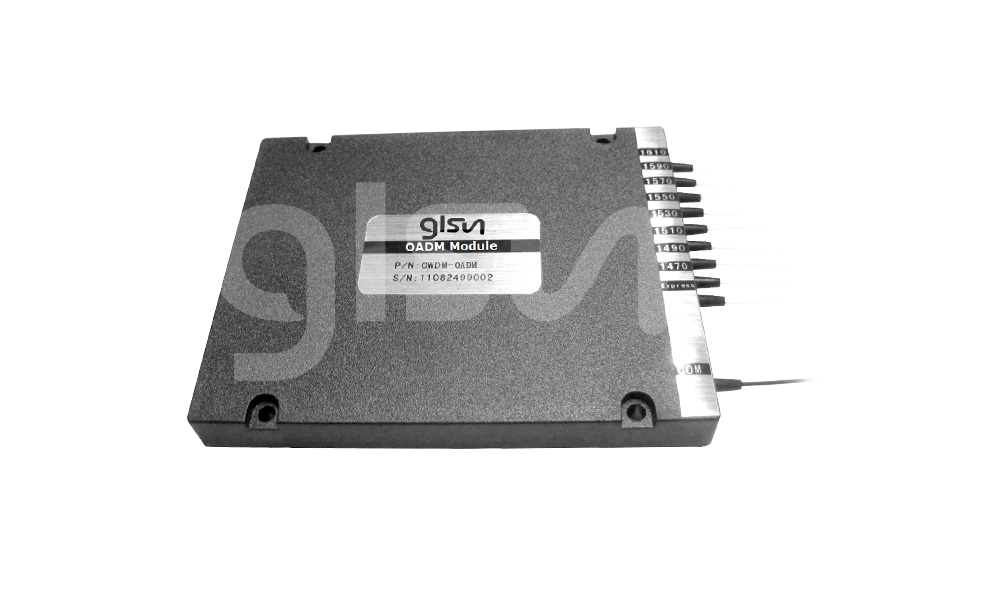
Single-channel OADM Application

The dual-channel OADM module has the ability to input / output a signal of 2 carriers (1 channel) from the input path (COM) and input / output of the same carriers to the output port.
2 channels OADM Application
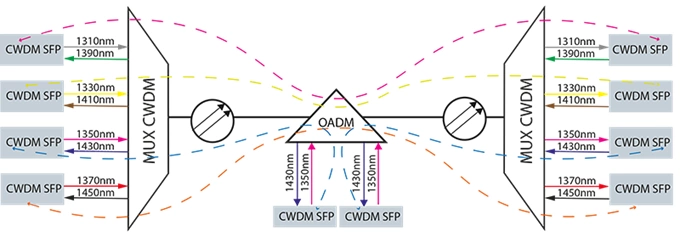
CWDM Filter
The CWDM optical filter is used to make CWDM multiplexer/demultiplexer MUX/DMUX and CWDM multiplexer OADM input/output.
It's a optical passive device for combining or separating optical signals with different wavelengths as part of CWDM multiplexing systems.
Technology: Thin Film Filter (TFF). Applying multilayer interference coatings and introducing light into the fiber using gradient lenses.
The TFF filter can be considered as a basic 3-port device: input port, input/output port, transit port.

Modules with multiple I/O ports are made by cascading multiple TFFs.
DWDM
DWDM stands for Dense Wavelength Division Multiplexing.
The distance between carriers in DWDM systems can be 25 - 200 GHz; in modern networks, the channel grid with a step of 100 GHz is most often used. Spectral bands C (1530~1565 nm), S (1460~1530 nm) and L (1565~1625 nm) are used for transmission.
DWDM OADM
The devices are designed to organize the input / output of a signal at a given wavelength from an optical group signal in a DWDM system at intermediate points.
The DWDM OADM module is made of series-connected TTF filters, passing through which a signal of a certain wavelength is distinguished, while the remaining wavelengths of the group signal pass through the device transparently.
There are single-fiber and dual-fiber OADM modules:
- single fiber is used to extract / add a signal from a line in one direction.
- two-fiber is used to extract / add a signal from a line in one direction and extract / add signals to a line in another direction. Moreover, the added wavelengths of the second direction may coincide with the wavelengths of the first.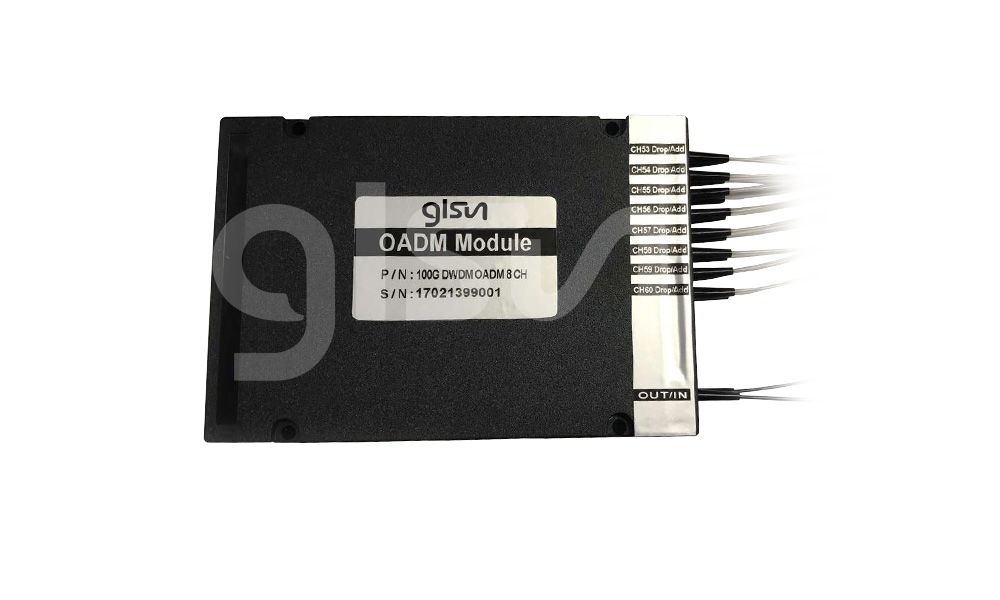
Single-channel (2 wavelengths) unidirectional (single fiber) extracts 2 wavelengths from a group signal (1 channel single fiber OADM)
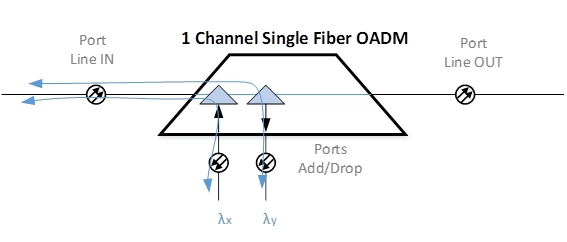
Dual-channel (4 wavelengths) unidirectional (single fiber) extracts 4 wavelengths from a group signal (2 channel single fiber OADM)
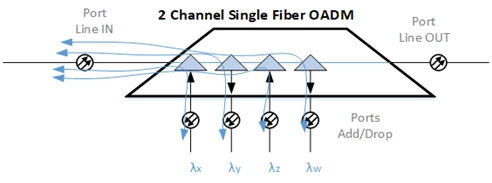
Single channel (2 wavelengths) bidirectional (dual fiber) extracts 2 wavelengths from the group signal and adds 2 wavelengths in the transit channel (1 channel Dual fiber OADM)
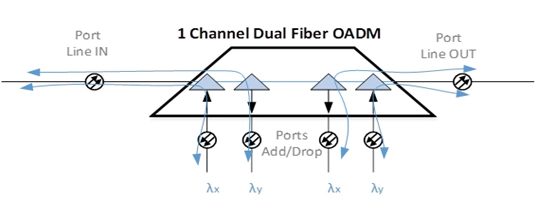
Dual channel (4 wavelengths) bidirectional (two fiber) extracts 4 wavelengths from the group signal and adds 4 wavelengths in the backhaul (2 channel Dual fiber OADM)

DWDM Filters
DWDM optical filter is designed to organize the input / output of an optical signal at a given wavelength, it is the minimum component of DWDM multiplexer / demultiplexer and DWDM input / output multiplexer.
The optical filter, extracting the necessary signal, passes the rest of the radiation unchanged. The device does not require power supply, it is a completely passive element.
The DWDM optical filter has a bandwidth of 0.8 nm. This feature must be taken into account when building hybrid DWDM + CWDM systems that use devices with a wider bandwidth.



















